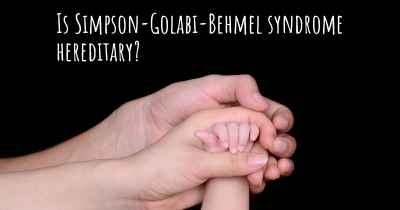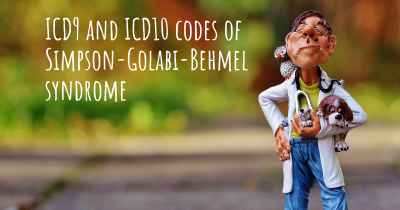What is the history of Simpson-Golabi-Behmel syndrome?
When was Simpson-Golabi-Behmel syndrome discovered? What is the story of this discovery? Was it coincidence or not?

Simpson-Golabi-Behmel syndrome (SGBS) is a rare genetic disorder that affects various parts of the body. It was first described in the medical literature in 1975 by David W. Smith, Richard M. Golabi, and Juan J. Behmel. The syndrome is named after these three physicians who independently reported cases of the disorder.
SGBS is an X-linked recessive disorder, meaning it primarily affects males. Females can also be affected but usually exhibit milder symptoms due to the presence of a second X chromosome. The syndrome is caused by mutations in the GPC3 gene, which provides instructions for producing a protein called glypican-3. This protein plays a crucial role in regulating cell growth and division during development.
Individuals with SGBS typically have distinctive physical features, including an enlarged head, broad face, wide-spaced eyes, a flat nasal bridge, and a large mouth with widely spaced teeth. They may also have skeletal abnormalities such as extra fingers or toes, joint deformities, and an enlarged liver and spleen. Additionally, affected individuals may experience developmental delays, intellectual disability, and an increased risk of certain cancers.
The history of SGBS can be traced back to the late 1960s when Dr. David W. Smith, a pediatrician and geneticist, encountered a family with several affected males displaying similar physical characteristics. He initially referred to the condition as the "X-linked gigantism syndrome" due to the overgrowth observed in affected individuals. However, it was later renamed as Simpson-Golabi-Behmel syndrome to acknowledge the contributions of Golabi and Behmel.
In 1975, Dr. Richard M. Golabi, a clinical geneticist, independently reported a similar syndrome in a family with multiple affected males. He described the characteristic physical features and noted the X-linked inheritance pattern. Golabi's work further supported the existence of the syndrome and its distinct clinical presentation.
That same year, Dr. Juan J. Behmel, a Dutch pediatrician, also published a report on a family with affected males. He highlighted the unique facial features and skeletal abnormalities seen in these individuals. Behmel's contribution helped solidify the recognition of the syndrome and its distinct clinical phenotype.
Over the years, further research has been conducted to better understand SGBS. Scientists have identified various mutations in the GPC3 gene that cause the syndrome. They have also investigated the role of glypican-3 in normal development and its potential involvement in cancer development.
Today, the diagnosis of SGBS is typically made based on clinical features and confirmed through genetic testing. Management of the syndrome involves addressing the specific symptoms and complications that may arise. This may include surgical interventions for skeletal abnormalities, early intervention programs for developmental delays, and regular monitoring for potential cancerous growths.
In conclusion, Simpson-Golabi-Behmel syndrome is a rare genetic disorder that was first described in 1975 by David W. Smith, Richard M. Golabi, and Juan J. Behmel. It is an X-linked recessive disorder caused by mutations in the GPC3 gene. The syndrome is characterized by distinct physical features, developmental delays, intellectual disability, and an increased risk of certain cancers. The contributions of these physicians have been instrumental in recognizing and understanding this syndrome, leading to improved diagnosis and management strategies.








